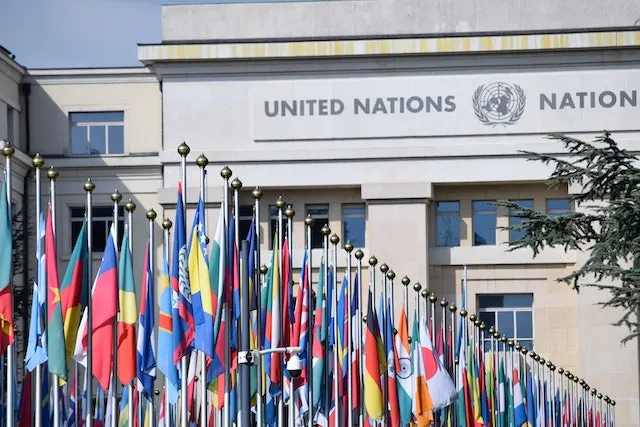Who Owns The Un Building In New York?
With its distinctive facades and lush gardens overlooking the East River, the United Nations Headquarters complex is one of the most recognizable buildings in New York City. But who actually owns this 18-acre site that has served as the headquarters of the UN since 1952?
If you’re short on time, here’s a quick answer to your question: The United Nations headquarters building and land in New York City are international territory owned by the UN itself.
Background of the UN Headquarters
Site Acquisition and Construction
The United Nations (UN) Headquarters is located in New York City, on the east side of Manhattan. The site was acquired for the construction of the building through an agreement between the City of New York and the United Nations.
The agreement, known as the Headquarters Agreement, was signed on June 26, 1947, and granted the UN extraterritoriality, meaning that the land on which the building stands is considered international territory.
Construction of the UN Headquarters began in 1948 and was completed in 1952. The process involved the demolition of the previous buildings on the site, which included the Sperry Gyroscope Company building and a slaughterhouse.
The construction project was a collaborative effort, with contributions from architects and engineers from around the world.
During the construction process, several challenges were encountered, including the need to excavate and reinforce the ground to support the weight of the building. The project also faced financial constraints, as the UN relied on member states for funding.
Despite these challenges, the construction of the UN Headquarters was completed successfully, and the building stands as a symbol of international cooperation.
Architectural Design and Features
The architectural design of the UN Headquarters was a joint effort by an international team of architects, including Wallace Harrison, Le Corbusier, and Oscar Niemeyer. The design aimed to reflect the principles of the UN, such as unity, transparency, and peace.
The main building of the UN Headquarters consists of a complex of four interconnected structures, known as the General Assembly Building, the Secretariat Building, the Conference Building, and the Dag Hammarskjold Library.
These structures are arranged around a central plaza, known as the North Lawn.
The General Assembly Building is the most iconic structure of the UN Headquarters. It houses the General Assembly Hall, where representatives from all member states gather to discuss and make decisions on global issues.
The Secretariat Building is the administrative hub of the UN, housing the offices of the Secretary-General and other UN departments.
The UN Headquarters is known for its distinctive architectural features, such as the glass curtain walls, which symbolize transparency and openness. The complex also includes various artworks and sculptures donated by member states, which add to its cultural significance.
For more information about the UN Headquarters, you can visit the official United Nations website here.
Ownership and Governance
The ownership and governance of the United Nations (UN) headquarters in New York is a topic that often sparks curiosity. Let’s delve into the details of who owns this iconic building and how it is governed.
International Territory
The UN headquarters in New York is considered international territory. This means that it is not under the jurisdiction of any particular country and is governed by the UN itself. The concept of international territory ensures the impartiality and independence of the UN in carrying out its duties and responsibilities.
As an international organization, the UN requires a physical space where member states can come together to discuss and address global issues. The UN headquarters provides a neutral ground where representatives from all member countries can meet and deliberate on matters of international importance.
While the UN headquarters is located in the United States, it is important to note that the building and the land it sits on are not owned by the US government.
Host Country Agreement with the U.S.
The ownership arrangement of the UN headquarters is governed by a Host Country Agreement between the United Nations and the United States. Under this agreement, the US government provides the land and the necessary infrastructure for the UN headquarters, while the UN assumes responsibility for the maintenance and operation of the building.
The Host Country Agreement also outlines the privileges and immunities granted to the UN and its staff. These privileges ensure the smooth functioning of the organization and protect its independence. For example, the UN is exempt from paying property taxes on its headquarters.
The agreement also establishes the legal framework for the relationship between the UN and the host country. It covers a wide range of aspects, including security arrangements, diplomatic privileges, and the resolution of disputes.
The ownership of the UN headquarters may seem complex, but it is designed to enable the UN to carry out its mission effectively and independently. The international territory status and the Host Country Agreement ensure that the UN can operate without interference and remain a symbol of global cooperation.
For more information on the UN headquarters and its ownership, you can visit the official United Nations website www.un.org.
Day-to-Day Operations and Management
When it comes to the day-to-day operations and management of the UN building in New York, it is a complex and highly organized process. The United Nations Secretariat, which is responsible for the administrative work of the organization, plays a crucial role in ensuring the smooth functioning of the building and its various activities.
UN Administration
The UN Administration is responsible for overseeing the day-to-day operations of the building, which includes managing the facilities, coordinating events and meetings, and providing support services to the member states and staff.
This involves a wide range of tasks, such as organizing conferences, maintaining the building’s infrastructure, and ensuring the availability of essential services like electricity, water, and internet connectivity.
The administration also manages the budget and financial resources of the UN Headquarters, ensuring that funds are allocated appropriately and transparently. This ensures that the building can continue to serve as a platform for international diplomacy and cooperation.
Security and Access
Given the high-profile nature of the UN building, security is a top priority. The Security and Safety Service of the United Nations is responsible for ensuring the safety of the building, its occupants, and visitors.
This includes implementing security protocols, conducting regular inspections, and monitoring access to the premises.
Access to the UN building is strictly controlled and limited to authorized personnel and visitors. The security measures in place include identity checks, bag screenings, and surveillance systems. The goal is to maintain a secure environment where member states can engage in diplomatic negotiations and discussions without compromising their safety.
It is important to note that the UN building in New York is considered international territory and is not subject to the jurisdiction of the United States. This is governed by a treaty called the “Headquarters Agreement” between the United Nations and the host country, which grants certain privileges and immunities to the organization and its personnel.
For more information on the day-to-day operations and management of the UN building in New York, you can visit the official website of the United Nations at www.un.org.
Visiting the UN Headquarters
The United Nations (UN) Headquarters in New York City is not only a symbol of global diplomacy but also a popular tourist attraction. Visitors from around the world come to witness the place where important decisions are made and international cooperation takes place.
Here is everything you need to know about visiting the UN Headquarters.
Guided Tours
One of the best ways to explore the UN Headquarters is through a guided tour. These tours offer a unique opportunity to learn about the organization’s history, mission, and its role in addressing global challenges.
Knowledgeable guides take visitors through the iconic General Assembly Hall, Security Council Chamber, and other prominent areas of the complex. Visitors can also see the artwork and exhibits that showcase the UN’s work and values.
During the tour, visitors can gain insight into the daily workings of the UN, witness multilingual meetings in progress, and even catch a glimpse of diplomats from different countries engaged in discussions.
The guided tours provide a fascinating behind-the-scenes look at the UN’s efforts to promote peace, human rights, and sustainable development.
Major Events and Meetings
The UN Headquarters is a hub for major international events and meetings. It hosts high-level summits, conferences, and special sessions where world leaders gather to discuss pressing global issues. Visitors may have the opportunity to witness these historic events and witness influential figures in action.
Some of the notable events that take place at the UN Headquarters include the General Assembly, where heads of state address the world, and the Security Council meetings to discuss matters of peace and security.
These events often attract media attention from around the globe, adding to the significance of visiting the UN Headquarters during such times.
It is advisable to check the UN’s official website or other reliable sources for information on upcoming events and meetings. This way, visitors can plan their visit accordingly and have a chance to witness these remarkable gatherings firsthand.
Significance as International Territory
The United Nations (UN) building in New York holds immense significance as a symbol of international cooperation and diplomacy. It serves as a meeting place for representatives from all member states, providing a platform for discussions on global issues, peacekeeping efforts, and the promotion of human rights.
The building itself, located in Manhattan, stands as a physical representation of the collective efforts of nations to work together towards a more peaceful and prosperous world.
Symbol of International Cooperation
The UN building in New York is a powerful symbol of international cooperation. It is where diplomats, world leaders, and delegates from around the globe come together to discuss and negotiate on matters of global importance.
The iconic General Assembly Hall, with its distinctive green marble walls and large mural depicting the “Golden Rule,” is a testament to the ideals of equality, justice, and unity that the UN strives to uphold.
Furthermore, the UN Headquarters in New York is home to various UN agencies and programs, such as UNICEF, UNESCO, and the World Health Organization (WHO). These organizations work tirelessly to address issues such as poverty, education, healthcare, and climate change.
The presence of these agencies within the UN building further underscores its significance as a hub for international cooperation and collaboration.
Unique Legal Status
The UN building enjoys a unique legal status as international territory. It is not owned by any particular country but is considered the collective property of all member states. This special status grants the UN certain immunities and privileges, allowing it to carry out its work independently and impartially.
As international territory, the UN building is exempt from local jurisdiction and laws. It is not subject to the regulations and taxes imposed by the host country, in this case, the United States. This ensures the neutrality and independence of the UN’s operations, enabling it to fulfill its mandate without interference.
The agreement between the United Nations and the United States, known as the “Headquarters Agreement,” outlines the legal framework governing the UN’s presence in New York. It grants the UN the right to operate freely and ensures the protection of its premises, archives, and diplomatic communications.
Conclusion
The 18 acres of land that the UN headquarters sits on in New York City have a unique status as international territory owned by the United Nations itself.
This gives the UN a level of extraterritoriality and independence within the host nation of the U.S., allowing it to function as a truly international site facilitating cooperation between all member states.








